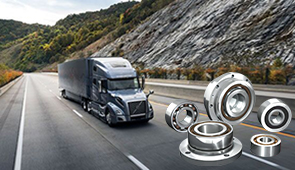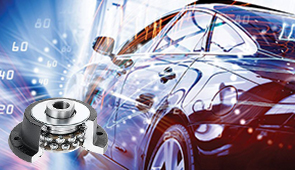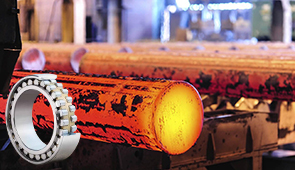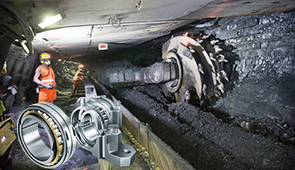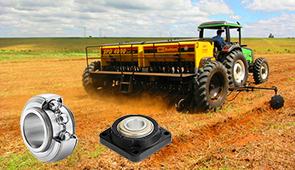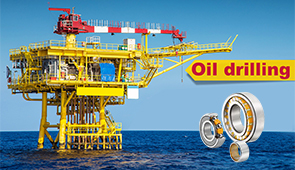Needle Bearing vs Roller Bearing: A Comprehensive Comparison
Bearings are a critical component in countless mechanical systems, responsible for reducing friction, enhancing efficiency, and supporting loads of various magnitudes. Among the numerous types available, needle bearings and roller bearings stand out as two highly relied-upon options. However, these bearings serve distinct purposes, and understanding their differences is essential for selecting the right one for specific operational needs. This article provides a comprehensive comparison between needle bearings and roller bearings, highlighting their design, functionality, applications, and advantages. By the end, you’ll be equipped with the technical insights necessary to make informed decisions for your machinery and engineering projects.
What is a Needle Bearing?
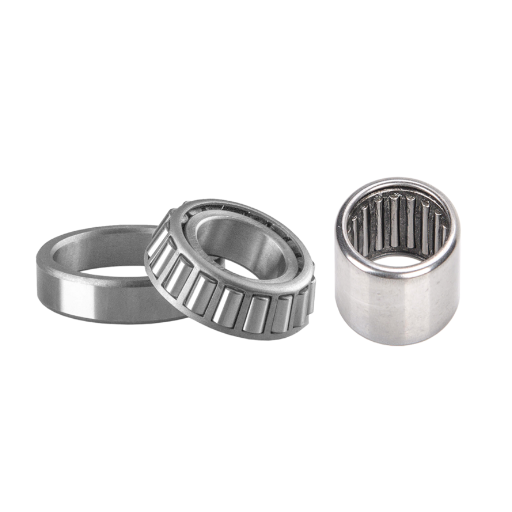
Understanding Needle Roller Bearings
Needle roller bearings are a particular type of roller bearing because of their cylindrical shape and high length-to-diameter ratio. This type of bearing is optimized for compact designs to manage high load capacities, making them very useful for applications with critical space constraints. The rollers in a needle bearing are very thin, making stress distribution and radial load handling much simpler. This allows for a more uniform, robust design.
As for the structures, needle roller bearings have different configurations, including drawn-cup, solid, and cage-assembled tops, each form designed for a certain application. For example, drawn-cup needle roller bearings are suitable for lightweight and oscillating motion applications, while solid needle roller bearings feature enhanced load capacity and increased rigidity. In addition to that, cage designs improve the alignment of rollers, which enhances performance by ensuring minimal wear.
Needle roller bearings are frequently used in the construction of automotive transmissions, industrial machinery, and gearboxes. From a mechanical viewpoint, it offers seamless and dependable motion, even in the toughest settings. Its design offers low friction and consistent output, further making them critical to systems with stringent efficiency requirements. Also, the progressive application of modern materials like high alloys, as well as modern lubrication techniques, greatly increases the service life and reliability of these bearings.
Key Features of Needle Bearings
- Compact and Lightweight Design: Because of the space needle bearings take, their length-to-diameter ratio permits oversized load capacities while maintaining a lightweight form. Such a design necessitates low assembly space, which makes them fit to be used in automobile transmissions and hydraulic equipment.
- High Load Capacity: Due to the contact area that is covered by needle-shaped rollers, these bearings can withstand radial and thrust loads effectively and with minimal wear.
- Low Friction Performance: To enhance smooth motion and lower energy expenditure, surface friction is reduced by needle bearings. Their sophistication is best seen in advanced lubrication and efficient thrust bearing systems that function at high speeds or high temperatures.
- Durability and Wear Resistance: Because of the advanced materials used, like hardened steel or modern ceramics, newer designs of needle bearings have much better resistance to wear, which reduces service life and is best put to use in extreme operating conditions.
- Versatile Applications: Precision and dependability make needle bearings indispensable in the auto, aerospace, and industrial facility sectors. Because of the diverse enabling operating environments, they are capable of enduring heavy loads or high-speed rotations.
- Advanced Lubrication Systems: Significant reduction in heat build-up, and optimal performance are achieved through the use of specially designed lubrication systems such as grease-sealed and oil-immersed systems. Reliable operation over temperature extremes is achieved for long bearing life.
- Customizable Configurations: Enhancements to adapt to specific functional challenges, including different cage materials, sealing mechanisms, lubrication options, or closing elements, can be added on demand for each application.
Needle bearings offer high precision, exceptional efficiency, and unrivaled reliability, making them core components in demanding applications. Ongoing advances in engineering and modern materials technologies increase the possibilities of meeting more sophisticated requirements.
Applications Where Needle Bearings Are Used
From automobiles to power tools, needle bearings find their utility because of their small size and weight, as well as their capacity to handle large loads. In cars, these bearings can be found in the transmission system, universal joints, and even in the steering system. Their capacity to bear large amounts of rotation and strain makes them very useful for critical systems.
In industrial machinery, needle bearings are equally useful for gearboxes, robotic arms, and conveyor systems. Unlike other parts, these need to retain their functionality and precision even under extreme load for a long time.
Another field where they shine is aerospace. Aviation parts, such as turbines and control systems, require materials that are able to withstand extreme temperatures and wear, and needle bearings provide that alongside a lightweight structure.
Due to the compactness and efficiency of these tools, they become very important in modern engineering. The variety of industries where needle bearings can be found serves to highlight their importance in modern manufacturing.
Exploring the Characteristics of a Roller Bearing
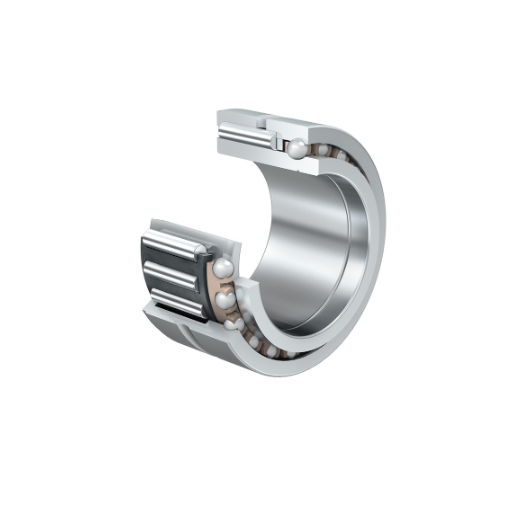
Different Types of Bearings in Roller Bearings
As a subtype of bearings, roller bearings are especially configured to manage large radial loads and some axial loads effectively. They comprise cylindrical, tapered, spherical, or even needle-shaped rollers, which help in minimizing the friction for rotational or linear motion. Given below are the types of roller bearings:
- Cylindrical Roller Bearings: Featuring High operational speed, accuracy, and strong radial load capability, Cylindrical roller bearings are designed for high speed applications. The rolling elements utilized possess a straight cylindrical structure which aids in decreasing frictional damage and increases operational speed. They are extensively used in geared electric motors, gear boxes and industrial machines. The advanced coatings and blended ceramics on certain materials also improve durability and thermal resistance.
- Tapered Roller Bearings: These tapered shaped rolling elements can deal with both radial loads and axial loads simultaneously. The tapered roller bearings are used in heavy industrial equipment and automotive axle systems requiring thrust and load tolerance. Superior geometry, enhanced lubrication techniques, and increased bearing measures all assist in reinforcing resistance to wear while increasing capacity to bear loads.
- Spherical Roller Bearings: These bearings stand out due to their remarkable self-aligning features. They help to compensate for shaft misalignments and other angular deviations. Spherical roller bearings find usage in vibrating machinery, wind turbines, and mining operations. Advanced designs today offer better patterns for load distribution, vibrational damping, and high performance in extreme environments.
- Needle Roller Bearings: These are the smallest and lightest roller bearings which contain long and thin rolling elements called needles. The use of needles allows them to sustain significant loads in compact spaces. Their applications span from portable tools to automotive transmissions, and even aerospace components. Innovations in cage design and heat treatment have greatly improved their lifespans.
- Thrust Roller Bearings: These are specialized for managing axial load and can be found in such applications as crane hooks, jack screws, and heavy rotatory assemblies. They come as cylindrical or tapered thrust types, depending on the defined requirements for load distribution.
A clear example of the advancement in case design and computational modeling to improve roller bearings reliability and effectiveness are the clear distinctions in industrial demand. Bearing technology is enhanced using new scientific materials, ensuring complete performance under complex scenarios.
How Roller Bearings Reduce Friction
Friction is mainly accomplished in roller bearings through their configuration, which reduces the contact area between two moving parts. Roller bearings do not use sliding motion like plain bearings do; instead, they use rolling elements (such as cylindrical or spherical, or tapered rollers) to distribute load and enable smooth motion. The reduction of mechanical resistance with these rolling mechanisms, when compared to welding sliding surfaces, is extensive.
The usage of advanced lubrication techniques further reduces the frictional force. Oil and grease lubricants create a film that separates rollers from the bearing races, thereby preventing direct contact between metals and consequently reducing wear and heating from friction. The friction with time is reduced due to the precision engineering, which perfects the geometry of rollers and races relative to each other, so the alignment of load is optimal and there is no undesired misalignment.
Other methods realized from recent progress in the science of materials have also reduced friction. Under different operational conditions, the introduction of advanced steel alloys and hybrid ceramics increases the strength and durability while simultaneously reducing the coefficient of friction. In addition, the application of new surface treatments, which include the use of coated or textured raceways, is designed to reduce energy losses and improve the efficiency of high-speed and heavy-load machines.
Leveraging these advancements along with the application of precision manufacturing, roller bearings continue to serve optimally for friction reduction within industrial and mechanical systems.
Comparing Needle Bearing vs Roller Bearing
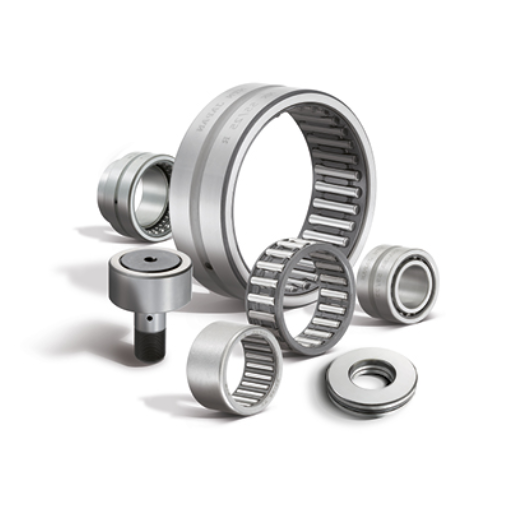
Load Capacity: Needle Bearing vs Roller Bearing
In terms of bearing design, the capacity to support a load is very important when selecting it for a particular use. It is important to note that this criterion differs greatly for needle versus roller bearings. Needle bearings have long, slim, yet circular rollers and are optimized for high radial loads while taking up little space. This makes them ideal for compact applications with moderate to high load capacities. One drawback, however, is that due to their construction, needle bearings lack effective axial load capabilities.
On the other hand, roller bearings such as cylindrical, spherical and tapered ones, offer greater breadth for load capacity. These bearings are designed to support high radial and, depending upon the type, significant axial loads as well. For example, spherical roller bearings have better self aligning features which helps them bear large amounts of shifting forces which makes them suited for heavy duty applications.
Needle and roller bearings are now able to support an even greater load due to recent developments in materials science and lubrication technologies. For example, modern bearings are now meeting the expectations set by industries such as aerospace, automotive, and heavy machinery due to new advancements in polymer cages and other engineered parts, which reduce wear and extend service life even under extreme conditions.
Durability and Maintenance in Needle Bearing vs Roller Bearing
In terms of durability, needle bearings perform well in applications with compact dimensions and a high load-bearing capacity. Compact size and sharp load-bearing verticals are the trademarks of needle bearings as a result of effective relief of cross-sectional area stress. However, the possibilities of exceeding wear in highly contaminated environments, under continuous high-speed operation, or overcrowded high-spun centers might lead to elevated internal circulation volume. In such situations, protective sealing and proper oiling of the parts are essential in reliably extending or servicing far under wear-out conditions.
On the downside of the argument, an increase in axial and radial load tends to apply more force on the roller bearings, which improves their durability in harsh environments. Bearers of the broadest cylindrical elements endure simpler loads due to standing lower roller and contact interference while shielding themselves from wear and tear. Because roller bearings increase in high contact stress regions tend to make them agile. Sustained and enhanced ruggedness of centrifugal equipment load regions determined the use of roller bearings extends, industry with high impact construction and elemental mining centered outlook, making them favored.
From the viewpoint of maintenance, both bearing varieties need active attention regarding lubricants, since a lack of or dirty lubrication is one of the primary sources of early failures. New tools such as self-lubricating materials and condition monitoring systems have been incorporated, which help in sustaining desired performance levels for longer periods without having to maintain, which was previously difficult. Constant monitoring of the system for wear, misalignment, and fatigue also helps in extending service life and reducing idle time. Careful selection of the bearing, together with effective maintenance routines, can improve the equipment’s reliability considerably.
Cost Considerations: Needle Bearing vs Roller Bearing
Needle bearings and roller bearings each have unique advantages and disadvantages that, when analyzing cost, offer beneficial trade-offs for different markets and use cases. The simpler design of needle bearings translates to a lower initial needle bearing purchasing price as they use less material and are lighter. Compactness and light load requirements yielded through these features are ideal applications for needle bearings.
On the other hand, roller bearings tend to offer increased durability at a higher initial purchase price. Their enhanced ability to bear radial and axial loads requires increased construction strength, which raises the purchase price. However, in highly demanding conditions and over a longer period, roller bearings provide significant value as they possess a high level of load capacity, which, under usage, greatly reduces maintenance and replacement costs.
Costs can also be impacted by operational factors like lubrication, wear, and maintenance. In certain high stress environments, needle bearings may require more frequent maintenance which could offset their low initial purchase cost. In other situations, roller bearings may seem like the more expensive option, but their greater durability and longer lifespan makes them more economical in the long run for heavy-load applications.
As can be seen, choosing between needle bearings and roller bearings is not straightforward and requires comprehensive evaluation of an application’s operational and maintenance requirements ah the desired cost-effectiveness.
Understanding the Role of Radial and Axial Loads
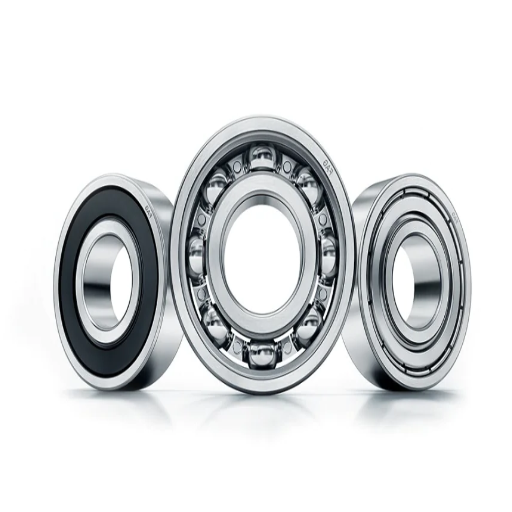
The Importance of Radial Load in Bearings
Radial load is the force that acts at 90 degrees to the shaft’s axis and is usually one of the forces that a bearing is designed to take. A bearing’s capacity to sustain radial load is affected by its construction, the material it is made of, and the lubricant employed. Roller bearings, for example, have extremely efficient radial load supporting capabilities because the rolling elements are of great length, which aids in the distribution of force over a larger area, thus lowering stress and wear.
For those applications where radial load is a major consideration, a thorough consideration of the type of bearing used is critical for effective operation and life expectancy. Rotational speed, amount of load, and the atmosphere must be critically taken into account. Off-center loading or unequal distribution of load may give rise to bearing stresses, therefore, reducing accelerated bearing life, as well as increasing the amount paid to keep it running. Newer Engineering materials, such as hybrid ceramic bearings, are being used in these high-speed and high-stress situations in a bid to increase the axial electrostatic load the bearing can take and reduce the chance of downtime due to fatigue or failure.
With the understanding of radial load applied, engineers can adjust mount and alignment requirements to offering maximum optimize bearing configuration enabling offer robust performance without compromising durability.
How Axial Loads Affect Bearing Performance
Axial loads, or thrust loads, significantly impact the bearing’s performance and the efficiency of connected parts. These loads occur parallel to the rotational movement of the bearing, while radial loads act perpendicular. All bearings that experience significant axial forces must be specially engineered to relieve stress, as improper management can lead to excessive wear, friction, and failure.
For example, impinging higher axial loads at contact walls of thrust and angular contact ball bearings are with higher geometry, aiding proper load transfer, hence leading to proper stability and distribution, intensifying bearing characteristic features. On the downside, when thrust bearings experience unacceptably high axial loads surpassing specification limits, or in combination with radial forces, initial oblique contact results in an increased risk of misalignment, resulting in difficulty escaping heat, leading to deformation of bearing parts.
As for the axial load performance, an engineer has to consider factors such as undercut shear stress, lubrication geometry, alignment correctness, preloading if necessary, and shear protective features. Research shows that axial load limits for bearings are most often the case defined with the material fatigue boundaries coupled with the dynamic load ratings as specified by the industry, which makes it necessary to follow advised limits to ensure optimal performance.
Choosing Bearings for Radial and Thrust Applications
Strategic consideration of load limits and operational requirments is paramount when choosing bearings for radial and thrust tasks. For perpendicular force application, radial bearings fit best when most of the exerted force is of a radial nature. This is why thrust bearings, also known as axial bearings, are best for parallel shaft axis loads.
Machinery and automotive components that are subjected to both radial and axial forces utilize more advanced bearing types, namely angular contact ball bearings and tapered roller bearings. The unique construction of these bearings enables them to withstand both types of loads simultaneously, making them much more efficient.
Specifically, Machine tools face the challenge of ensuring performance under an increase in materials like steel instead of softer materials, together with surface treatments like carburizing and nitriding, which make vents more durable and lowering the wearing rate, even more complex under certain conditions. Enabling counter-dynamic forces is complex; however, with proper computational modeling, achieving optimal design is possible, which increases the longevity of the system.
Employing new technologies in design and manufacturing enables engineers to configure bearings to sustain the various cycling loads of radial and thrust operations. The configuration allows smooth and reliable functioning across numerous applications and industries.
Why Choose a Ball Bearing Over Others?
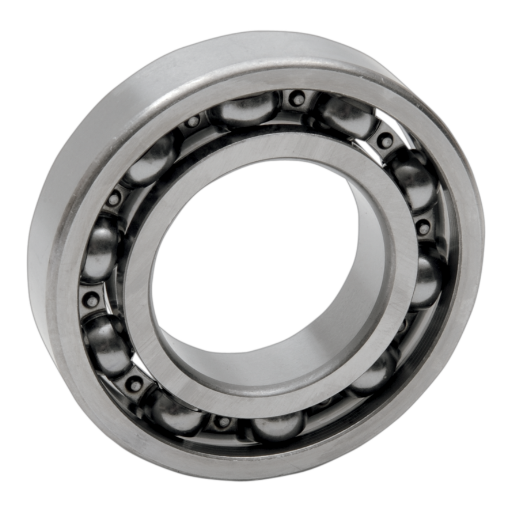
Benefits of Radial Ball Bearings
Owing to their numerous advantages in bearing applications, radial ball bearings stand to be motor components of great importance. The main benefit of radial ball bearings is their ability to effectively assist both radial and axial loads simultaneously without any, or with very little, friction interference. Bearings or components that possess such a trait are useful for energy efficiency and aircraft machinery has a significant dependence on such machinery. Also, radial ball bearings are smaller and lighter, which makes them attractive for applications with size restrictions.
One of their most significant advantages is their high speed capability. Precision construction and low friction should allow radial ball bearings to be operational where there are high rotary velocities, however, there is also a problem of overheating. If not taken care of, these can become hazardous to performance and cause failure. Modern-day advancements also allow for radial ball bearings to be implemented with better wear and corrosion resistance and greater load-bearing capabilities.
Radial ball bearings exhibit slow wear and minimal maintenance which enhances the bearing’s lifespan. This, combined with advanced lubrication systems, seal technologies and better bearing materials make these components suitable for aerospace, automotive and industrial machinery settings. With such advanced qualities, radial ball bearings lead to operational advantages, reduced costs and greater reliability for various applications.
Comparing Ball Bearings to Other Types
When analyzing ball bearings versus other types, such as roller and plain bearings, a few important considerations come to mind. Each type of bearing has its unique advantages and disadvantages that make it suitable for various scenarios. However, ball bearings are meant for radial and axial loads and perform best under high-speed and light-load conditions, while roller bearings excel in radial load bearing with slower operational speeds. This is largely because roller bearings have a larger area of contact, but as a tradeoff, they experience much more friction and heat.
Bearings without rolling elements, also known as plain bearings, are more cost-effective and simpler to construct, which makes them an attractive option. They’re also low maintenance and accept large impact loads. But in situations where high power and speed are needed, the strong dependence on lubrication, along with a relatively high friction coefficient, restricts the overall performance.
The implementation of new technologies like ceramic hybrid bearings and new lubrication systems has increased performance levels in ball bearings. The concerns associated with high-speed heat generation and wear are now greatly controlled, allowing use in high-performance robotics and medical devices. Even though ball bearings cannot carry as much load as other bearings, such as roller bearings, they are still considered a versatile choice when speed, precision, and reliability are prioritized.
Special Applications for Ball Bearings
As with any mechanical device, ball bearings undergo stress and strain depending on the intended work. Ball bearings are crafted to sustain the utmost efforts in functionality and precision. As an example, aerospace engineering employs ball bearings on jet engines and navigation systems. Components such as these require advanced materials that have low friction and resistance to wear and tear. Additionally, ceramic or stainless steel is used because it can endure extreme heat, rotational speed, and has a high level of stiffness.
From a broader perspective, precise ball bearings play a crucial role in the robotics industry, where an exceptional level of accuracy is required regarding the control of motion for robotic arms and other assemblies. Other applications include the medical field, since ball bearings are used in surgical instruments for ventilation and imaging equipment. Smooth and quiet operation is critical during delicate medical procedures, for the utmost level of precision necessary during diagnosis.
Progress in the design of miniature ball bearings is also paving the way for use in microelectromechanical systems (MEMS), which allows for greater compactness and reliability in micro drones, hearing aids, and implantable medical devices. There is a growing industrial need for systems to be quieter and more efficient, which has led to the development of specialized coatings and lubricants for ball bearings that enable extended operational lifetimes even in corrosive or vacuum environments. Continuous development remains to be broadening the range of uses of ball bearings in various advanced technologies.
Frequently Asked Questions (FAQs)
Q: What are the main differences between needle bearings and roller bearings?
A: Needle bearings have slender, cylindrical rollers with a large surface area in contact, whereas roller bearings use shorter, thicker rollers. This design allows needle bearings to handle higher load capacities in a more compact space compared to other types of rolling-element bearings.
Q: How does the structure of needle bearings differ from roller bearings?
A: Needle bearings typically have an inner and outer ring with a needle cage that holds the needle rollers in place. In contrast, roller bearings may have a variety of structures, including cylindrical, tapered, or spherical rollers, and are often found in wheel bearings.
Q: What are the advantages of using needle bearings over ball bearings?
A: Needle bearings offer a higher load capacity and better support for axial loads than ball bearings due to their increased surface area in contact. This makes them suitable for applications where space is limited, and load capacity is crucial.
Q: Can needle bearings support axial loads?
A: Yes, needle bearings can support axial loads, especially when designed as thrust needle bearings. This makes them ideal for applications requiring both radial and axial load support.
Q: In which applications are needle bearings preferred over deep groove ball bearings?
A: Needle bearings are preferred in applications where space is limited and high load capacities are needed, such as in automotive transmissions and some high-speed machinery, compared to deep groove ball bearings, which are used for lower load applications.
Q: What is the role of the outer ring in needle bearings?
A: The outer ring in needle bearings encases the needle rollers and provides a surface against which the rollers can move. It is crucial for maintaining the alignment and smooth operation of the bearing.
Q: How are thrust needle bearings different from radial needle bearings?
A: Thrust needle bearings are designed to support axial loads, while radial needle bearings are intended to handle radial loads. The design of each bearing includes features tailored to its specific load type.
Q: Are needle bearings a special type of roller bearing?
A: Yes, needle bearings are a special type of roller bearing characterized by their long, thin rollers, which allow them to fit into smaller spaces while still offering high load capacities.
Q: How do needle bearings compare to ball bearings in terms of contact surface area?
A: Needle bearings have a greater surface area in contact compared to ball bearings, which allows them to distribute loads more evenly and handle higher stresses.
Q: What types of rolling-element bearings include needle bearings?
A: Needle bearings are one of the many types of rolling-element bearings, which also include ball bearings, cylindrical roller bearings, and tapered roller bearings, each designed for specific applications and load types.
UCTH213-40J-300 with Setscrew(inch)
CNSORDERNO: Normal-duty(2)
TOGN: UCTH213-40J-300
SDI: B-R1/8
SD: 2 1/2
UCTH212-39J-300 with Setscrew(inch)
CNSORDERNO: Normal-duty(2)
TOGN: UCTH212-39J-300
SDI: B-R1/8
SD: 2 7/16
UCTH212-38J-300 with Setscrew(inch)
CNSORDERNO: Normal-duty(2)
TOGN: UCTH212-38J-300
SDI: B-R1/8
SD: 2 3/8
UCTH212-36J-300 with Setscrew(inch)
CNSORDERNO: Normal-duty(2)
TOGN: UCTH212-36J-300
SDI: B-R1/8
SD: 2 1/4
UCTH211-35J-300 with Setscrew(inch)
CNSORDERNO: Normal-duty(2)
TOGN: UCTH211-35J-300
SDI: B-R1/8
SD: 2 3/16
UCTH211-34J-300 with Setscrew(inch)
CNSORDERNO: Normal-duty(2)
TOGN: UCTH211-34J-300
SDI: B-R1/8
SD: 2 1/8










